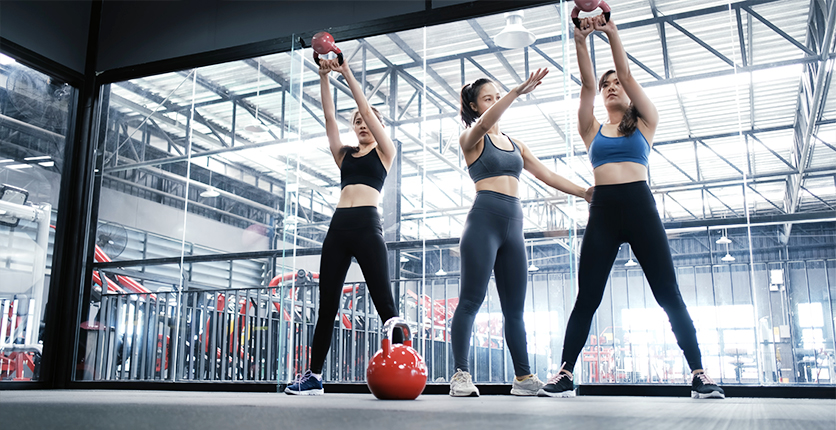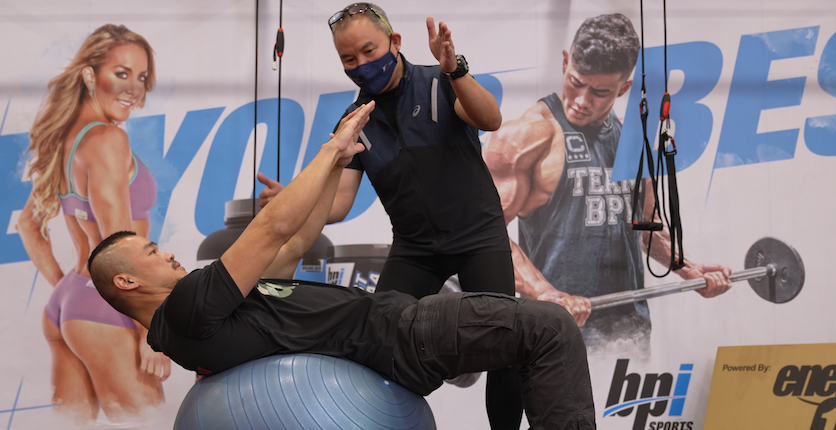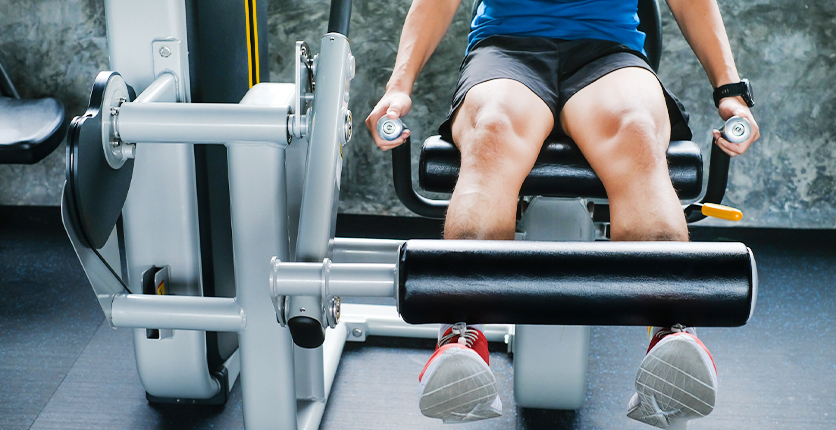Exercising, training and playing sports are great for your health and can help improve your athletic performance, but they can also cause injury.
According to Joan Liew, a fitness coach and bodybuilder and the co-founder of Fitness Factory, injuries can be caused by pushing yourself too hard, too fast, not warming up before the training or sports session, hyperextension of the ligaments and muscles, having been inactive for too long, or the improper use of sports equipment.
Overtraining is also a big cause of sports injuries.
“This occurs when you continue to train despite apparent signs of overtraining,” Joan explains. “As a result, many athletes believe that weakness or poor performance signals the need for even more training. Unfortunately, this only depletes the body further. Overtraining can be difficult to recover from and may require weeks or months off from exercising – something that’s especially challenging if your life revolves around your sport.”
Types of sports injuries

The most common sports injuries include:
Sprains: Sprains occur when ligaments are torn or overstretched in a particular body part, says Joan. These may result in some pain and swelling.
Strains: Overstretching or tearing ligaments can lead to strains, whereas muscle strains are caused by overstretching your muscles and tendons. Tendon connects bone to muscle through thick, fibrous connective tissue. Joan adds that you may experience pain and be limited in movement.
“Other than exercises and athletic activities, strains may also result from overexertion, prolonged repetitive motion, falling or slipping, or from simply standing or sitting in one place for too long.”

Knee injuries: Your knee may be overstretched or have a tear in the muscles or tissues.
The anterior cruciate ligament (ACL) is an important ligament that stabilises the knee joint. It connects the thigh to the shin. Joan says that an ACL injury tends to occur when a person changes direction suddenly, jumps and lands, or pivots while still resting their foot on the ground. When the injury occurs, you might hear or feel a “pop” in your knee.
“A torn ACL can cause swelling, instability, and pain in the knee that makes it difficult for you to carry your weight,” she points out.

Fractures: Our bones are strong and flexible, but fractures can still occur, especially when we play sports, Joan states. Falling, repetitive trauma or being hit directly can cause a bone fracture if a force is applied greater than the bone’s own strength.
There are four types of injury based on severity:
- Closed fractures: Those in which the bone has not penetrated through the skin
- Combined or open fractures: When the bone has broken through the skin, leaving the fractured bone exposed to infection.
- A partial or incomplete fracture: Bones that have not yet broken into two
- A complete fracture: Bones that have completely broken apart
Bones that are commonly fractured are located in the hand, wrist, foot, ankle and collarbone.
Preventing sports injuries

What exercises can be done to prevent injuries related to sports or training?
Joan says that warming up and cooling down the right way are essential.
“The advantages of warming up are that it minimises your chance of pulling a muscle, decreases joint pain, reduces your chance of injury, and can reduce muscle soreness after you’re done training or playing sports.”
Warm-ups should last from five to 10 minutes. The exercises should mimic the ones you’ll be performing during your actual sports session. In the case of weight lifting exercises, for example, you should practise the same movements without the weights.
The best warm-up exercises include leg bends, leg swings, shoulder/arm rotations, jumping jacks, jump rope, lunges, squats, a slow walk or jog, yoga, standing side bends, lateral shuffles, butt kicks, knee bends, and ankle circles.
Your cool-down (or what’s known as the recovery period) usually comprises exercises that are done at a slower pace and a reduced intensity.
Says Joan: “Cool-down exercises help to gradually lower your heart rate and breathing, reduces the chance of you fainting or experiencing dizziness, helps remove lactic acid from your muscles, and prepares your muscles for your next training or sports session.” All of the warm-up exercises can be used as cool-down exercises.
Know your own body and how far you can push with a fitness check-up. SAFRA members receive 10% off at DexaFit Asia; more info at www.safra.sg/promotions/dexafit-asia
Nutrition is also key for post workout recovery and to prevent injury. Try organic vegan protein powder from LyteProtein – SAFRA members enjoy up to 15% off. More info at www.safra.sg/promotions/LyteProtein
Read more on how to stretch and get warmed up properly before your workout:
Stretch & Get Prepped For Your Gym Workout!
6 Simple Yoga Stretches & Top Tips For Practising Yoga
Want more fitness articles like this, and other lifestyle content right in your inbox? Sign up for the eNSman Newsletter – you don’t need to be a SAFRA member to subscribe – and never miss another story!







